Graham Reid | | 10 min read
The Rolling Stones: Gimme Shelter

Chrissie Hynde of the Pretenders – appropriately wiry and driven, often in black, her signature fringe below her eyebrows – once said, “presentation is half of it in rock'n'roll. It's not just the music – there's music and there's attitude and there's the image”.
From the uninhibited Elvis Presley captured by the camera when lost in the moment on stage in 1956 and the moody Beatles in Hamburg before fame hit, through the sexual swagger of Led Zeppelin and Jimi Hendrix to cathartic grunge and the attention-grabbing bling of hip-hop, every new movement in popular music has come with its own catalogue of images.
Many photographs of rock'n'roll artists or their audience freeze more than just that moment. They are emblematic of an era or a transcendent moment which still speaks to us decades later.
So it is with Who Shot Rock & Roll, the exhibition of almost 200 photographs by more than 100 photographers – some classic images, many never previously seen – at the Auckland City Art Gallery until March 3, 2013.
Compiled over four years by New York author, curator and photography historian Gail Buckland, this collection of images across six decades charts seismic cultural shifts as much as pinpointing a moment.
Let's talk rock and roll because these are the ties that bind. I was interested that the book was going to come first but then the idea of an exhibition was very quickly picked up. When you were thinking of it as a book, was it more focused that the exhibition which covers a wide sweep of 60 years of diversity.
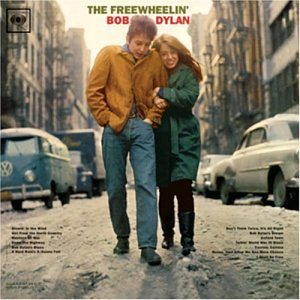
 The book was going to be this wide. I
won't even begin to compare your knowledge of music with mine because
I'm a photo historian and a Distinguished Professor in the History of
Photography and for me I like to look at subjects and see what hasn't
really been done in my field.
The book was going to be this wide. I
won't even begin to compare your knowledge of music with mine because
I'm a photo historian and a Distinguished Professor in the History of
Photography and for me I like to look at subjects and see what hasn't
really been done in my field.
I always loved The Freewheelin' Bob
Dylan album and I realized I didn't know who made that picture.
And it is absolutely iconic, to the point that when Obama was inaugurated [in 2008] he held Michelle's arm and they walked up Pennsylvania Ave and all over the internet that image of them was juxtaposed with Bob Dylan's.
I thought it was kind of crazy that if I didn't know these people then who did?
I discovered that Don Hunkstein who made that image lived near me on the Upper West Side and he did Kind of Blue and a hundred other albums for Columbia Records. His story is fascinating.
For the most part – except for a few celebrities like Annie Leibovitz – these photographers' contribution to rock'n'roll is enormous but they have not been celebrated as creative and important artists in their own right.
It's always easy for me because I'm a historian to do the whole thing as it were, but this was harder because people were constantly asking, 'What is your definition of rock'n'roll?' or saying that rock'n'roll ended in the Fifites and after that it was rock.
But I didn't go there because it didn't seem important and I'm not a music historian. For me the music is that which binds us and which we identify with at a certain times in our life.
 My son Paul says we identify our
tribes, and so it was wonderful for me to do the research because
Henry Diltz for example – who took the photo of Tina Turner on the
book cover – is major music photographer and has got more attention
than many others. But I can guarantee you that my colleagues the
museum world don't now who these photographers are.
My son Paul says we identify our
tribes, and so it was wonderful for me to do the research because
Henry Diltz for example – who took the photo of Tina Turner on the
book cover – is major music photographer and has got more attention
than many others. But I can guarantee you that my colleagues the
museum world don't now who these photographers are.
When I went to speak to Henry who lives in LA I said I wanted to speak to him and he said, 'What do you mean? You want to speak about Joni Mitchell, Crosby Stills and Nash, the Eagles . . '
I said, 'No I want to speak you' because it's not as important who is in the photograph as him as a photographer. He is about 66 and he said in his whole life no one ever asked to see him, they always wanted to see the musicians.
I said we are going to do this differently. The musicians have had plenty of accolades and recognition, let's turn the attention on to the photography. And because I write on that I curated the show as I would curate any exhibition and I wrote about the pictures as I would write about any important works of art, to illuminate them and discuss them.
At one point in the book I say, 'Is Tina Turner on the stage any less lofty than an Ansel Adams mountaintop?'
But in my field, which the history of photography, there is this stupid hierarchy and rarely do music photos get into the histories.
But it's all changing since my show, some of the artists have had their work in the Museum of Modern Art and galleries have picked them up. So I have to give myself a little pat on the back.
I think it is important that you put these names out there. I've met people like Bob Gruen and I've always thought Robert Freeman's series of album covers for the Beatles became iconic images and defined their period. But I couldn't have named who did The Freewheelin' Bob Dylan either, yet these people defined a period.
And how we dressed and combed out hair. And the body language. We picked up our cues from the still image and there is a sense we lost something when we went to microscopic digital images. There was a time when there was a shared image that al people could hold in their hands and look at, and it was 12 inches by 12 inches, an album cover.
I'm also a cultural historian and every revolution needs to be documented to be believed and rock'n'roll is one of the most important social revolutions the world has ever known. These [photographers] describe themselves like being at the forefront, they were at the frontline and weren't going to come back from the concert until they had got the defining image.
In the Sixties and Seventies there was very little music television so it was appointment viewing. YouTube – and iTunes – means we don't have those defining images?
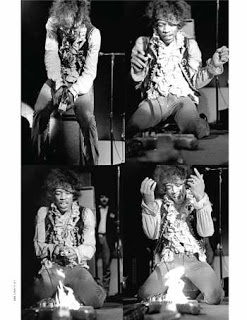 And there is something very powerful
about the still image. A good example is Jimi Hendrix who we remember
for the music but also some of those images of him which really stay
in our brain in a particular way. We can remember music videos but
the way our brain processes something that moves is quite different
from the way we process a still image.
And there is something very powerful
about the still image. A good example is Jimi Hendrix who we remember
for the music but also some of those images of him which really stay
in our brain in a particular way. We can remember music videos but
the way our brain processes something that moves is quite different
from the way we process a still image.
There are so many people who know so much about music come to exhibition and find so much they didn't know. It is exciting because grandparents bring their grandkids and everybody is talking.
The Brooklyn Museum guards tell me they'd never seen people spend so much time reading captions or talking so much because they wanted to share their own experiences. People are delighted it isn't the same old thing again.
The research took four years and that was mostly interviewing almost every photographer who was still alive.
I interviewed to get their story and was also going through their archives so I wasn't just using the same images which have already been reproduced, and I also tried to keep the standard very high.
I had never seen so many bad photos, like in bands' books. Most of it is schlock yet sometimes there's a good photo of whoever the musician is just thrown in.
I wanted to change the whole tenor of looking at music photos so people would say, 'Wow, these are really phenomenal' for different reasons, whether it is portrait or a performance or crowds.
It is interesting that you have images of the audiences because this is an interactive art form and a two-way street. The audience can often tell us as much about the era as the artist. I think the ones of David Bowie in his Ziggy years are extraordinary.
Also I wrote the introduction to a book of rock'n'roll photographs by Hans Schmidt and I said in that introduction that there are no rock gods without the people who loved them.
In my heart the show could not have done without were performance photographs, which are very hard to take, and the fans and crowd because you can see it on their faces.
I've done 14 books and we all have a
way of thinking about our work and my ideas come as books. If I have
an idea it is generally first as a book, but I know the director of
the Brooklyn Museum and at a social event he asked me what I was
working on and when I told him he said, 'My god that would make a
great exhibition'.
It was a blockbuster in LA and the line was three and half hours long. That was incredible, I wouldn't stand in line that long!
I find it remarkable you were part of the first generation of rock'n'roll and you saw Elvis in the mid Fifties.
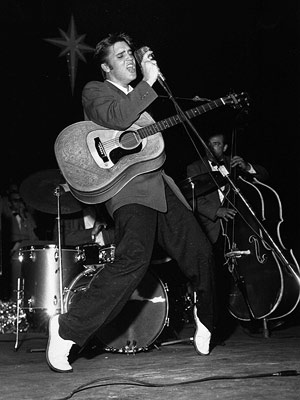 Yes in '56 and I was eight years old
and couldn't care less about Elvis. But my sister was 12 and a
fanatic and my aunt, who had a baby and had to stay home with the
baby, didn't want my sister to go to the concert by herself. But the
last thing my sister wanted to do was bring her eight-year old
sister.
Yes in '56 and I was eight years old
and couldn't care less about Elvis. But my sister was 12 and a
fanatic and my aunt, who had a baby and had to stay home with the
baby, didn't want my sister to go to the concert by herself. But the
last thing my sister wanted to do was bring her eight-year old
sister.
I'm 64 and it is great being the age I am and it's the biggest cliché around so I am saying this tongue in cheek, but it is the soundtrack of your life.
Are there images in the exhibition that really speak to you in a personal way?
I'm not really going to answer this because I looked through so many thousands of pictures that I have an affection for every one that is in the exhibition.
But I had that Freewheelin' Bob Dylan propped in my bedroom as an image not just the music. Them going somewhere, and I was desperate to go wherever they were, they were walking right out of the frame. I thought I'm not alone and my daughter tells me it's called teenage angst. You want a better world and want to break out and be your own person and the music speaks to you, but sometimes the image does too.
Bob Gruen was telling me that over the years so many young people came to him and said, 'I always thought I was a freak, I was the only person who looked like me in Missouri or in my town in Ohio and I would look at the rock magazines and I could see I wasn't alone and others looked like me.' So it was important on that level.
I'm not diminishing the importance of the music, but I am trying to argue that the image was very important also.
That Chrissie Hynde quote where she says rock'n'roll is about music attitude and image. Every new rock'n'roll movement comes with a new set of clothes?
Oh yes. I was going through the EMI archives in London and it was hysterical because I was going through the folders and you'd have a band say in March 1962 and then you'd go to May they had a different hairstyle and the notes added 'Do not use these photos' and they were all in the same sort of suits. You could do a whole study just following clothing and hairstyles and shoes.
And what was wonderful was you could see when the band didn't want to be managed and packaged and they broke out and they worked with creative photographers. They weren't always sure what they wanted but they knew they didn't want to look like every other band.
Many of the photographers in my show have stopped photographing because the musicians are packaged.
I found it interesting that many got out when the felt it was all PR and codified.
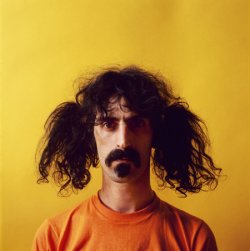 Yes, what was fun was when to artists
worked together. That Frank Zappa photo on the orange background is
interesting. I was in Jerry Schatzberg's studio and it was just
propped up in the corner and I said to Jerry that it was great and
funny picture. But there wasn't a room full of PR people and
hairdressers there or anyone styling him. It was two people – the
photographer and the musician – having a good time.
Yes, what was fun was when to artists
worked together. That Frank Zappa photo on the orange background is
interesting. I was in Jerry Schatzberg's studio and it was just
propped up in the corner and I said to Jerry that it was great and
funny picture. But there wasn't a room full of PR people and
hairdressers there or anyone styling him. It was two people – the
photographer and the musician – having a good time.
Same with a lot of the Dylan pictures like Blonde on Blonde which Jerry also took. They were just walking around the Meatpacking District just the two of them. That just doesn't happen now.
In the Eighties style was more important than substance, did you find that less interesting?
Because my emphasis was not on the music but the image, I would go through people's archives and drawers and if I fell in love with the picture I fell in love with the image before I knew the date. I'm not expert in this and photographers would laugh at me because I didn't know who I was looking at, but I know a great photograph.
Pennie Smith loved watching me look through her files. She did that wonderful Clash album cover and her first assignment after art school was Led Zeppelin. She just loved that I was looking for great pictures. It turns out I used her Clash and Led Zeppelin in the show who are not minor players, but all I was looking for was great photos.
Were there any photos you wanted but could get, did some photographers not want to be involved?
Yeah on a number of occasions some people felt I was not representing them in numbers [of images] or they wanted their famous pictures in there.
I'm not infallible and I have to work with integrity and I can't say I call it right all the time but there's a photo of the Band in a kitchen and the photographer who took it was friends with Dylan and the Band and did a lot of album covers.
But I discovered this little 8x10 which seemed so honest and direct and the kind of the thing we don't often see. He did want that in but people just love that photo, they are called the Band because they are not pretentious.
What's interesting is the photographer thought it was the kitchen at Big Pink and it was labelled that way, but it wasn't. I think because I had uncovered it an somebody came and looked at it and had lived in Big Pink they said, 'That wasn't my kitchen'.
Most of the photographers have thanked me.
Jill Furmanovsky spent her whole life in this field and she has said over and over that this is the first time in 30 years she has got any recognition and been treated with real respect for her own work. So that's been a good feeling.
There are plenty of big names [among the musicians] in the exhibition, but this is to celebrate the men and women who gave rock'n'roll its image.


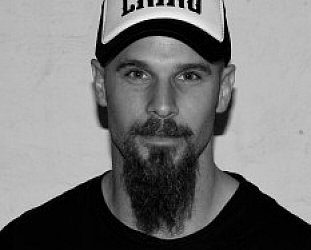


post a comment